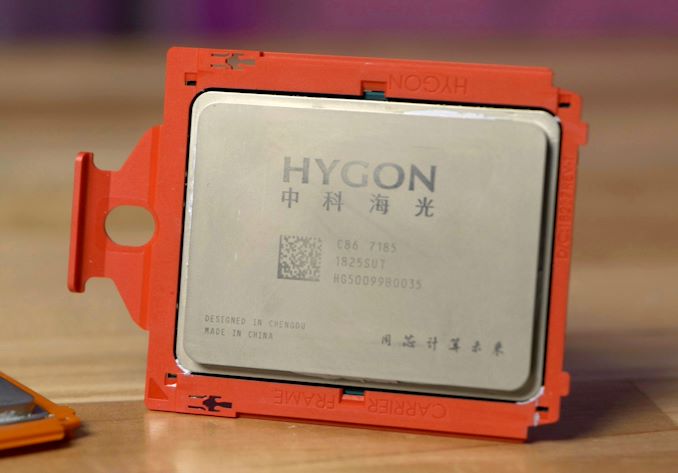China's dual 16-core Hygon CPU server rack barely outperforms a quad-core Skylake Core i7-6700HQ mobile CPU in Geekbench AI
Hygon is relying on AMD's 2017 Zen 1 architecture for its CPUs and, as a result, gets beaten handily by all modern mainstream desktop CPUs.

A rack comprised of two Hygon server-based processors was spotted on the Geekbench browser featuring a run of Geekbench's new AI-based benchmark. Benchleaks on X reports that the chip's CPUID name is 900F22.
Sadly for the company, the dual-CPU configuration scored abysmal results in Geekbench's AI benchmark. The single precision score was 1,412 points, half precision score 531, and the quantized score was 1,523. The two CPUs operated at a base frequency of 3GHz flat and were paired with 64GB of memory.
By comparison, Intel's nearly 10-year-old Skylake-based Core i7-6700HQ quad-core mobile CPU was barely any slower than the dual 32-core chips, featuring a single precision score of 1,113 points, half-precision score of 589 points and a quantized score of 1,394 points.
| Row 0 - Cell 0 | Single Precision Score | Half Precision Score | Quantized Score |
| Dual Hygion 16-core CPUs | 1,412 | 531 | 1,523 |
| Core i7-6700HQ | 1,113 | 589 | 1,394 |
| Ryzen 5 7600X | 3,542 | 1,686 | 1,394 |
Compared to a much more modern CPU, the Hygon-based server rack is (expectedly) vastly outperformed by mid-range desktop CPU hardware. For instance, one AMD Ryzen 5 7600X user report we pulled up scored 3,542 points in single precision, 1,686 points in half-precision, and 6,281 points in quantized, representing a 2.5x to 4x performance improvement over the Hygon server CPUs, despite having only a fraction of the number of cores.
We can't be sure what exact Hygon CPU model was tested, but regardless, Hygon only utilizes AMD's original Zen architecture from 2017 in all of its server chips — in-fact, it has figured out a way to port AMD's Zen architecture into AMD's latest SP5 socket, which powers its latest Zen 5-based chips. This is why Hygon's CPUs suffer a serious performance deficit compared to all modern CPUs, despite having many cores.
Hygon is a fabless Chinese-based chip maker, and due to U.S. sanctions, it can't use anything beyond AMD's original Zen architecture (at least for now), which is the company's Achilles heel for competitive generational performance improvements. The only way it has been able to boost performance is by adding more cores to its CPUs and adding more CPUs to its platform, which does help boost multi-core performance but critically doesn't help in most other areas such as single-core IPC and latency-related bottlenecks, not to mention missing out on the latest CPU instruction sets such as AVX-512.
Get Tom's Hardware's best news and in-depth reviews, straight to your inbox.

Aaron Klotz is a contributing writer for Tom’s Hardware, covering news related to computer hardware such as CPUs, and graphics cards.
-
Pete Mitchell Looks like the Chinese don’t do so well when they can’t steal someone else’s designs.Reply -
Geef I hope Tomshardware does a 'What they promised' vs 'What actually showed up' for gear article.Reply
Certain countries (won't say which) are known for not meeting their promised standards. -
abufrejoval I felt compelled to comment, because it's the exact CPU (i7-6700HQ) that I am typing this on...Reply
A nice Gigabyte P35V6 notebook that I love for its versatility, dual M.2 and dual SATA, one as a swappable bay and great compatibility: it runs about every OS I've ever thrown at it, including Windows 11 24H2, and is still not trying your patience in terms of speed.
I wouldn't run HPC or media editing on it but anything 2D it does rather well and it still beats every iGPU known to man with that GTX1070m (8GB VRAM, 32GB RAM). It was originally a gamer laptop and it's still showing.
I've actually run it as a Linux KVM server on occasion, mostly because it's so flexible in storage, it comes with a UPS included (battery still only at 3.8% deterioration) and it' pretty low energy consumption.
The only issus I have with it: when you run 4 operating systems on a box, patch days hit harder...